News
A Casual Case of Buddy Malfunction
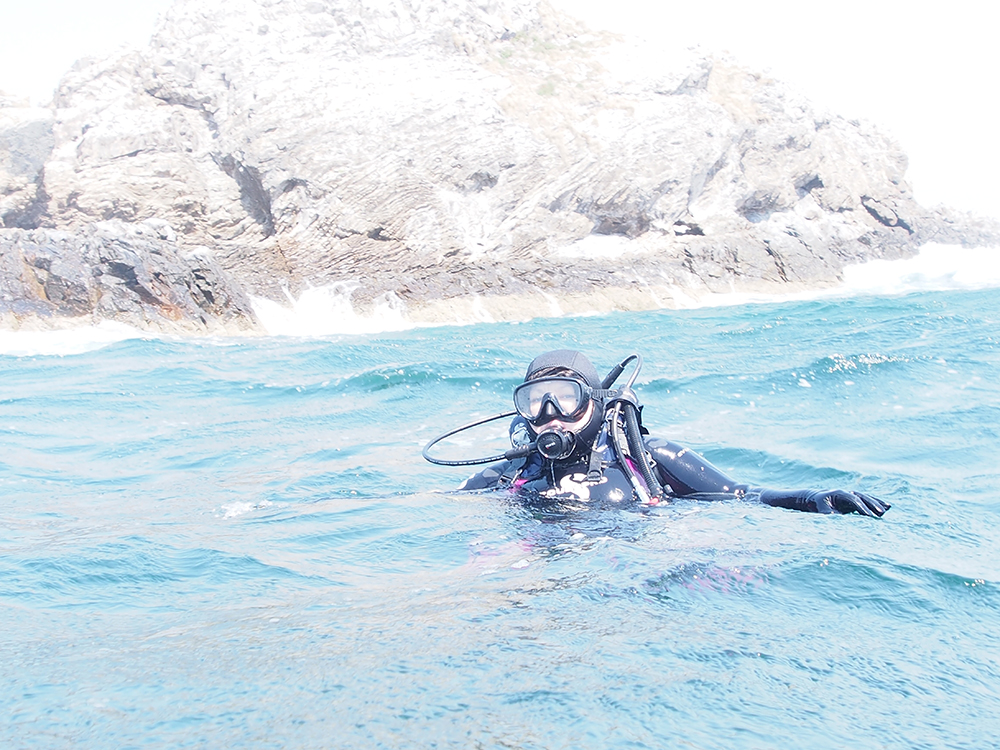
What do you do when things go sideways fast and your designated random buddy is oblivious to your peril?
It started like most dive days, with clear skies, calm seas and vigorous activity; hauling equipment onto a regular one-day, two-dive charter; a transient group unfamiliar with the site topography. What follows is a common enough scene across the planet, the dive guide partnering everyone into dive-buddy pairs, before revealing the overall plan for the guided groups. It is automatically assumed that every diver is fully aware of his or her duty-of-care, as part of the Dive-Buddy System within it.
Later, speaking to my regular Dive Shop owner and operator Mike McKinnon, I asked if there was an international standard for dive operators when making these random on-board buddy selections. “No.” he replied. “It’s pretty much up to the individual operator and usually based on the number of logged dives, certification and date of last dive. We tend to group the inexperienced together and why we have dive guides.”
When I asked dive guide Katie Glasheen, an instructor on Queensland’s Sunshine Coast with over 20 years’ experience and 6,000 dives behind her, what she uses as criteria for buddying, she said. “The circumstances vary, but I also look at certification levels and experience. Pairing someone who is inexperienced with someone more experienced, makes good sense, but can hamper the more experienced person’s dive.”
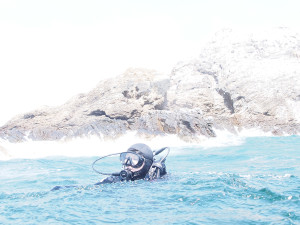
With four out of five people in my group holding professional cameras, it is clear that I am tagging along with an experienced group. Thrilling! I enjoy my bottom time. I like to go slowly, stopping often and if there is one thing that ruins a good dive, it’s inflexible dive guides who heckle and process you along at break-neck speed. However, since my day-buddy is also clearly focused on his photography, I think it wise to mention to the dive guide that I only have 12 dives behind me and that I am trialling a new integrated BCD. I will most likely need advice on the weighting. She assures me that she will be close by at all times.
Re-checking my air, regulators and gauges, I inflate and deflate my BCD. Check. It feels snug and a dream not having to struggle with a weight belt. Once in the water, I inflate and deflate it again – making sure it is working properly – I release the air this second time from the shoulder toggle. Check. Fully deflated, we head down the mooring line to the top of a flat rock ledge at about 12 metres.
The conditions are just perfect with no current. Visibility is at about 15 metres, beautiful! My buddy’s strobe is already doing disco-quick-time, lighting up some extraordinary images of Eastern Blue Gropers and some schooling Trevally. Stunning! There are a number of Wobbegongs and turtles about too, which is more than enough to make any diver’s lens boggle… and it does. I think I would have to grow fins to get my buddy’s attention right now.
But the dive was proving a bit of a roller-coaster ride for me. I was inflating and deflating, shifting the weight, rolling a little, inflating again, feeling too buoyant, deflating… Then, yes, it seemed I’d figured it out and I could see my ‘buddy’ about 6metres ahead of everyone, his camera squarely aimed at a Wobbegong shark. I couldn’t recall that he’d looked up even once since we got to the bottom, which was too bad for me because just about then everything went sideways. It was just 10 minutes into the dive, at about 18metres when for reasons unknown I began to turn upside down and ascend.
My immediate response was to reach behind and pull on the dump valve cord at the bottom of the BCD, but nothing happened. I tugged harder while struggling to right myself but was getting nowhere with either effort. The valve mechanism was jammed shut and my ascent rate was accelerating as the trapped air expanded. I watched our dive guide look up at me, my arms flailing, but she didn’t swim to my aid. The last thing I remember seeing as I hit warp speed was my dive buddy’s flashing strobe.
On the surface I was able to right myself but I was exhausted, uncoordinated and unable to remember to fully inflate my BCD. I was disoriented though vaguely aware that I’d surfaced too quickly and could be in serious trouble.
Inexperienced and alone, I was scared and becoming more frightened as I drifted closer to the rocks and the pounding breakers. I waved to the boat but they couldn’t see me from their mooring at the diver rendezvous point. In Australia it’s not compulsory in some states for divers to carry safety sausages. I do now, wherever I am! Remembering the golden rule I waited a few minutes expecting my buddy or dive guide to arrive, but they didn’t.
By then I was panicking, and half submerged. I began swallowing large mouthfuls of water. I began to pray. I’m guessing non-believers would have, too. It was my partner’s voice that replied, telling me to relax, to just relax, which gave me hope, even courage. I quickly decided he was right and that my chances with the rocks were preferable to drowning needlessly. So I maneuvered onto my back, tried to relax and hoped the boat would see me before I hit the shore.
Inside of 20 minutes I was shivering, disoriented and semi-conscious. My fingers were numb, my co-ordination and senses were dulled and my head was spinning. I do remember strong hands grabbing me and hauling me up onto the boat, but my legs being too weak to hold me. The crew was slow and clumsy administering oxygen – it was the first time for the two of them – and there was some disagreement on procedure. Finally, I inhaled deeply.
My head wouldn’t clear though and my fingers continued to tingle. Gazing about everything was a blur and I had no idea if my buddy was on board or still in the water. Someone took my hand and assured me all was okay, and that a radio call had been made to shore. Before long a waiting ambulance sped me to the hospital with symptoms of mild decompression sickness.
Four hours later I was declared okay, with no residual injury, and except for feeling extremely tired for days afterward I was back on my feet. The only challenge I faced when the hospital discharged me was riding across town with nothing on but a hospital gown and my wetsuit in hand.
I was lucky, but the incident raised many questions in my mind about the dive buddy system and how seriously, or not, it is taken by some divers who don’t see diving for the team sport it is. My dive buddy from that unpleasant day was long gone by the time I returned to the dive shop. The dive guide who didn’t assist me said her decision had been to surface the group early and notify the boat. Uneasy with this response, I asked seasoned PADI dive instructor Ben McKenna, also from Queensland’s Sunshine Coast, whether it would be acceptable for a guide to leave an experienced group to aid me in my predicament? “Yes, most definitely,” he said. “Instructors take safety very seriously and we watch all our inexperienced divers very closely, especially if they’re in trouble… it’s why we’re there!” But decisions made are individual, each situation different and dive operator discretion is a factor too.
The owner and manager of the dive shop resisted accountability. It all came down to the malfunctioning BCD, a post-mortem on which revealed that the bottom dump valve release had indeed jammed shut. This made me feel better about my diving skills, and the apology, and refund from the company was appreciated, but I was left with my concern for a failed buddy system. Aren’t we responsible when casually agreeing to dive with strangers?
According to the PADI Diver Manual (1984 Edition) and the Scuba Diving Handbook 2007, every dive buddy is required to ‘Keep track of the other buddy staying together for the entire dive – maintaining a separation that can be closed up within only a couple of seconds, and if separation does occur, searching to re-establish contact with the buddy for one minute, and, if that fails, safely returning to the surface to re-establish contact in this way.’
If some experienced divers have become complacent with this rule, what is the best way to handle the situation? What is the obligation of each person involved? Solo diving is an option, maybe a sound one for the experienced diver. Whatever is to be done must happen before the dive. Full disclosure is essential. Should training agencies place more focus on the buddy system in basic courses? Maybe create a buddy specialty course? Would this reinforce importance and combat buddy complacency? Should dive boat crews be more diligent pairing divers, taking into account the objectives that each diver/customer has for the dive ahead?
The questions remain unanswered. Perhaps there is no simple solution except strict adherence to the buddy system, while understanding that the flip side – only looking out for number one – is an accident waiting to happen.
Have you endured a similar experience to Lilla with a dive buddy or guide? If so, we want to hear your story in the comments section below.
Article by Lilla Clarke
Photos by Samuel Medland
Gear News
Go anywhere with Stahlsac
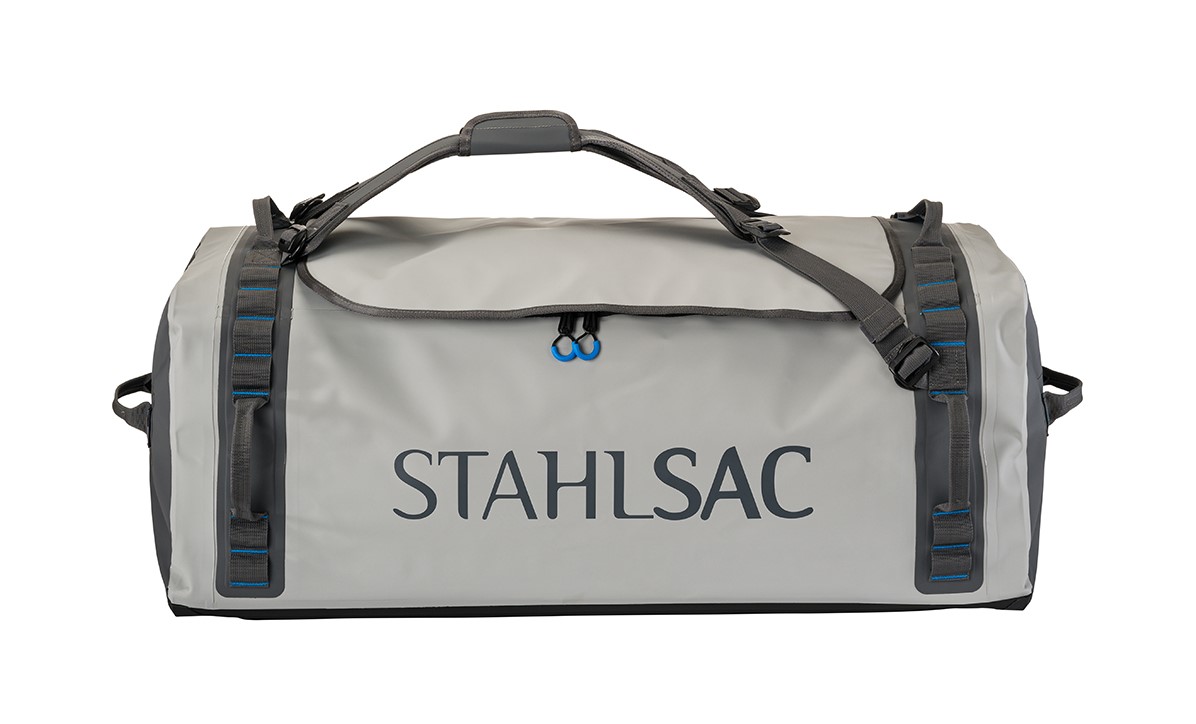
Stahlsac dive bags and travel luggage are built for our community of divers, surfers, kayakers and outdoor explorers who need bags that are constructed with durability, toughness, and 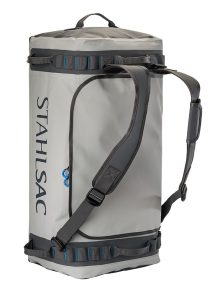 the highest quality the industry has ever seen. We were founded by one man determined to build better watersports and dive bags, and today, that mission is carried on by many. Adventure doesn’t just present itself; it requires discovery. When we design dive bags, we make sure they are tough enough for you to explore in all conditions—warm and cold, wet and dry—to the nearest and farthest reaches of the earth. And for those times you want to push the boundaries of adventure, Stahlsac dive bags make sure you can truly GO ANYWHERE.
the highest quality the industry has ever seen. We were founded by one man determined to build better watersports and dive bags, and today, that mission is carried on by many. Adventure doesn’t just present itself; it requires discovery. When we design dive bags, we make sure they are tough enough for you to explore in all conditions—warm and cold, wet and dry—to the nearest and farthest reaches of the earth. And for those times you want to push the boundaries of adventure, Stahlsac dive bags make sure you can truly GO ANYWHERE.
Abyss Duffels
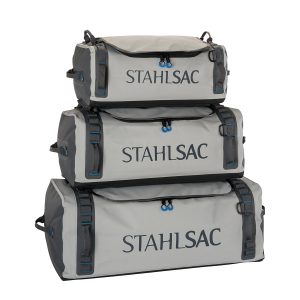 Made to be your partner-in-crime on every adventure, Stahlsac’s Abyss Duffels protects your gear from Mother Nature’s worst. Tough and 100% waterproof with double-TPU nylon material that shrugs off daily wear-and-tear, and RF-welded seams further boost the bag’s potential for lifelong exploring. Get Wet. Get Lost. Go Anywhere with Abyss.
Made to be your partner-in-crime on every adventure, Stahlsac’s Abyss Duffels protects your gear from Mother Nature’s worst. Tough and 100% waterproof with double-TPU nylon material that shrugs off daily wear-and-tear, and RF-welded seams further boost the bag’s potential for lifelong exploring. Get Wet. Get Lost. Go Anywhere with Abyss.
- A weatherproof duffel for trips, travel, and adventure
- Ultra-durable double-TPU nylon protects your gear
- Material repels water and keeps your equipment dry
- RF-welded seams are flush, tough, and waterproof
- Removable straps transform duffel into backpack
- Zippered internal stow compartments carry essentials
- External zippered flap is easy to open and close
- Welded external handles make transporting a breeze
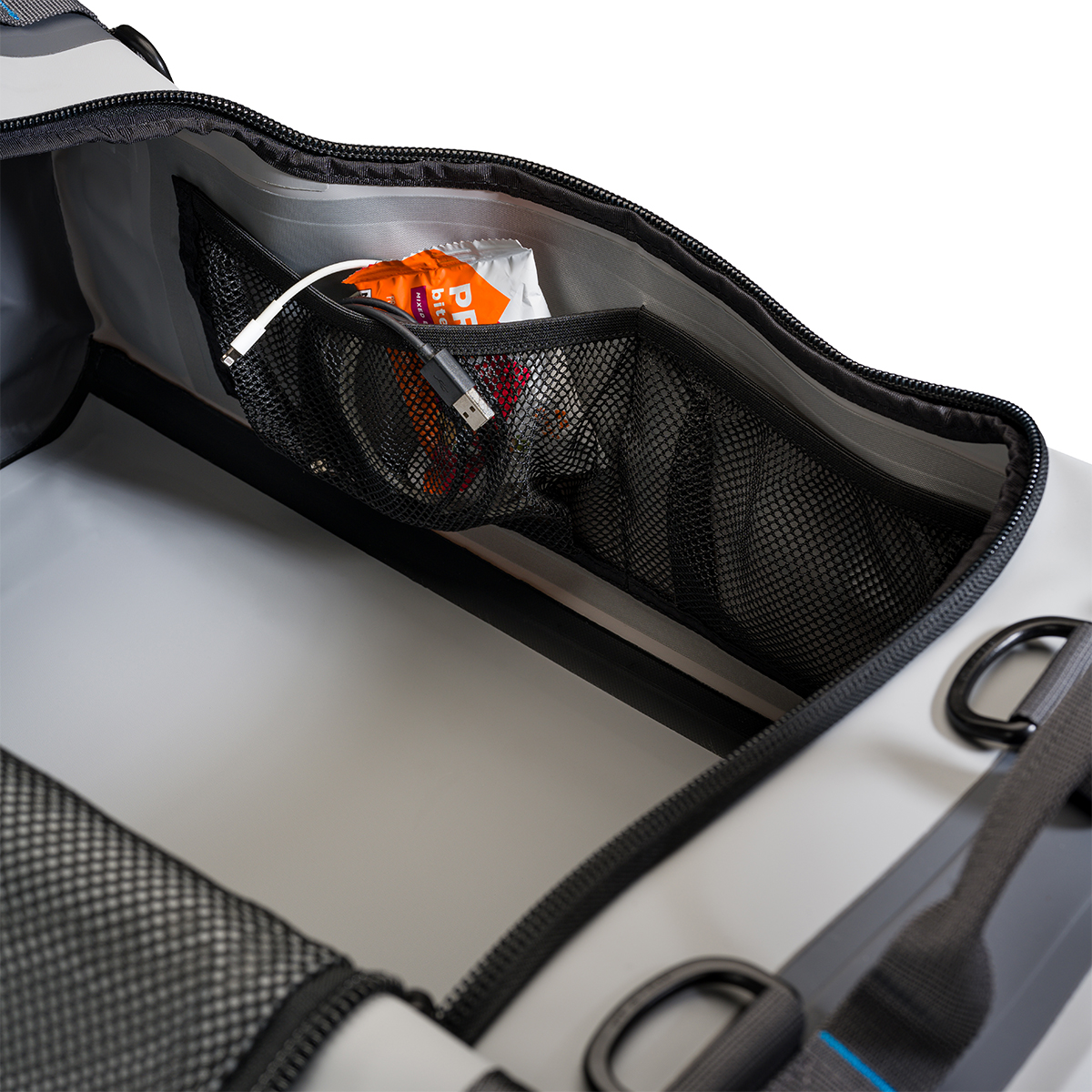
Panama Mesh Backpack
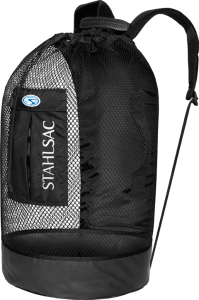 The most copied design in scuba diving, the Stahlsac Panama Mesh Backpack is the “original” design and features two high-density foam padded shoulder straps, extra durable polyester mesh, duffel bag handles and our unique zippered dry pocket inside that combines with a wet pocket outside. The bottom’s built from reinforced 18-gauge PVC nylon to combat the wear and tear of your active coastal lifestyle, and, as a bonus in every bag, we supply a 12″ x 12″ mesh drawstring satchel for extra stowing utility. Pack up your beach kit and go.
The most copied design in scuba diving, the Stahlsac Panama Mesh Backpack is the “original” design and features two high-density foam padded shoulder straps, extra durable polyester mesh, duffel bag handles and our unique zippered dry pocket inside that combines with a wet pocket outside. The bottom’s built from reinforced 18-gauge PVC nylon to combat the wear and tear of your active coastal lifestyle, and, as a bonus in every bag, we supply a 12″ x 12″ mesh drawstring satchel for extra stowing utility. Pack up your beach kit and go.
- Density foam padded shoulder straps
- Outside wet/dry pockets
- 2 Carry handles
- Tough, snag-resistant polyester mesh
- Reinforced PVC bottom
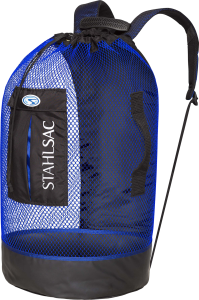
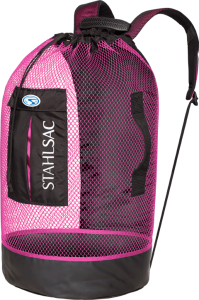
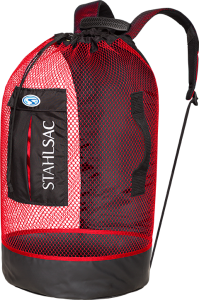
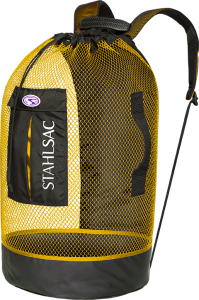
For more information about Stahlsac bags, visit www.stahlsac.com/dive-bags.
Sea & Sea is the home of Stahlsac and other leading diving brands in the UK.
Blogs
EXCLUSIVE: Jeff Goodman interviews Mark Spiers, CEO of New Scuba Diving Training Agency NovoScuba

In a video recorded exclusively for Scubaverse.com, Jeff Goodman interviews Mark Spiers, CEO of new scuba diving training agency NovoScuba.
Find out more about NovoScuba at www.novoscuba.com.
-

 News3 months ago
News3 months agoCapturing Critters in Lembeh Underwater Photography Workshop 2024: Event Roundup
-

 Marine Life & Conservation Blogs3 months ago
Marine Life & Conservation Blogs3 months agoCreature Feature: Swell Sharks
-

 Blogs2 months ago
Blogs2 months agoMurex Resorts: Passport to Paradise!
-

 Gear Reviews3 weeks ago
Gear Reviews3 weeks agoGEAR REVIEW – Revolutionising Diving Comfort: The Sharkskin T2 Chillproof Suit
-

 Blogs3 months ago
Blogs3 months agoDiver Discovering Whale Skeletons Beneath Ice Judged World’s Best Underwater Photograph
-

 News2 months ago
News2 months agoPADI Teams Up with Wellness Brand Neuro to Drive Ocean Change and Create a Blue State of Mind
-

 Gear Reviews3 months ago
Gear Reviews3 months agoGear Review: Oceanic+ Dive Housing for iPhone
-

 News3 months ago
News3 months agoWorld’s Best Underwater Photographers Unveil Breathtaking Images at World Shootout 2023





